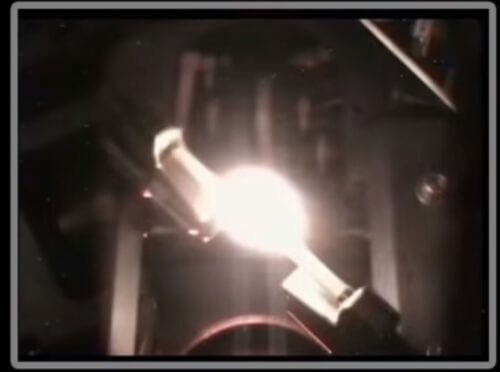On Earth, a flame looks like a tear to us due to the chemical reactions that occur in combustion. What happened to the flame on the International Space Station?

Since the domestication of fire in prehistoric times, it has been a focus of interest, as people tried to figure out how to ignite it and how to preserve it, for practical purposes, such as cooking. Generations of chemists have succeeded in deciphering the chemical mechanism that shows how the oxygen from the air mixes with the combustion materials and which chemical substances are created as a result of the fire (depending on the source material that burned). We thought we knew everything about fire, but it turns out that even the most researched field in science has something to learn.
On Earth, even in the simple burning of a candle, thousands of chemical reactions occur. Hydrocarbons from the wick burn and decompose in the heat. They combine with the oxygen and create light, heat, carbon dioxide and water. The rest of the materials that remain become a material that we call by the general name soot, which flies in the air from the place of combustion as it floats and swings in a process known as "buoyancy". Due to this movement, as well as the movement of the air next to the flame, the flame appears teardrop-shaped to us.
fire in space
A study by Dr. Furman Williams from the University of California in San Diego examined flames inside a closed chamber on the International Space Station (using the astronauts who were on the station at the time) how combustion develops and he was surprised to see that instead of the teardrop shape, the shape of small balls developed. Unlike flames on Earth, which greedily expand as they demand more and more fuel. The combustion balls allow oxygen to reach them. Oxygen and fuel connect in a narrow area on the surface of the ball and not inside it. In an experiment called FLIX, the astronauts burned drops of a hydrocarbon fuel compound - hectane. On his face it appeared that the main flame had gone out, but the drops inside it continued to burn independently
"They seem to have continued to burn without flames," says Williams. "At first we didn't believe it ourselves." In fact Williams believes the flames were there, but they were too pale to be seen. "We'll call them cold flames," he explains.
A normal flame burns at temperatures of 1,200-1,800 degrees Celsius. The cold flames burn at a relatively low temperature of 250-550 degrees Celsius. According to Williams. "Their chemistry is completely different. Normal flames produce soot, carbon dioxide and water. Cold flames produce carbon monoxide and formaldehyde."
According to Williams, studying the behavior of the 'cold flames' on the space station may help in designing cleaner ignition systems for cars. Understanding the chemistry of the phenomenon will make it possible to improve a development that car manufacturers have been working on in recent years, "homogeneous charge compression ignition" (HCCI - acronym for "homogeneous charge compression ignition"). Instead of a spark in the vehicle's cylinder, a gentle and less polluting combustion process will be activated inside the cabin."
"The chemistry of the HCCI includes a reference to the chemistry of the cold flames" says Williams. "The additional control we get from the stable combustion on the space station will give us more accurate chemical values for this type of research."
More of the topic in Hayadan:
The findings of the "twin experiment" revealed how the human body changes in space
Report: Radiation in space causes serious concern regarding manned flights for long periods
High school students will conduct an experiment in space with the first Israeli astronaut (News from 1999 in preparation for the flight of the late Ilan Ramon which finally took place in 2003 and ended in a crash).
